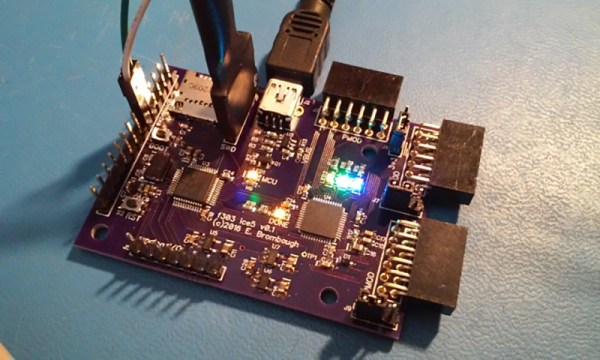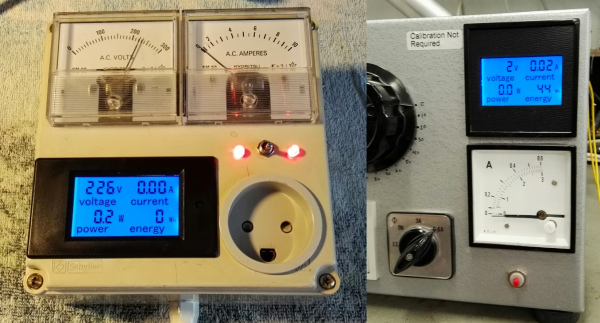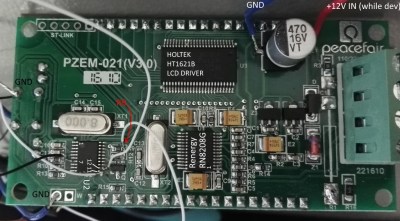Slowly, very slowly, the time when we don’t subject embedded beginners to AVRs and PICs is coming. At a glacial pace, FPGA development platforms are becoming ever more capable and less expensive. [Eric Brombaugh] has been playing around with both ARMs and FPGAs for a while now and decided to combine these two loves into a single board that’s capable of a lot.
This board is fittingly called an STM32F303 + ice5 development board, and does exactly what it says on the tin. There’s an STM32F303 on board providing a 32-bit CPU running at 72 MHz, 48 kB of SRAM, a quarter meg of Flash, and enough peripherals to keep anyone happy. The FPGA side of this board is a Lattice iCE5 with about 3k Look Up Tables (LUTs), and one time programmable non-volatile config memory.
The connections between the ARM and FPGA include a dedicated SPI port, and enough GPIOs to implement full-duplex I2S and a USART. Like all good projects, [Eric] has shared all the files, schematics, and BOMs required to make this board your very own reality, and has provided a few links to the development toolchains. While the FPGA is from Lattice’s ice40 family, it’s not supported by the Open Source Project Icestorm toolchain. Still, it’s a very capable board for ARM and FPGA development.















